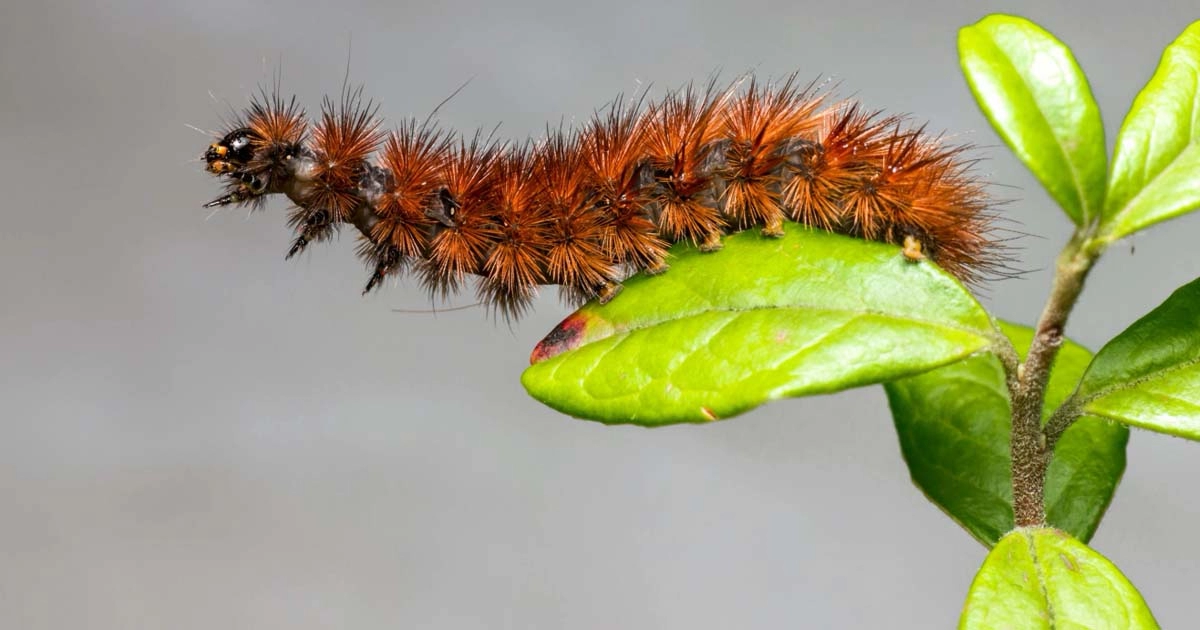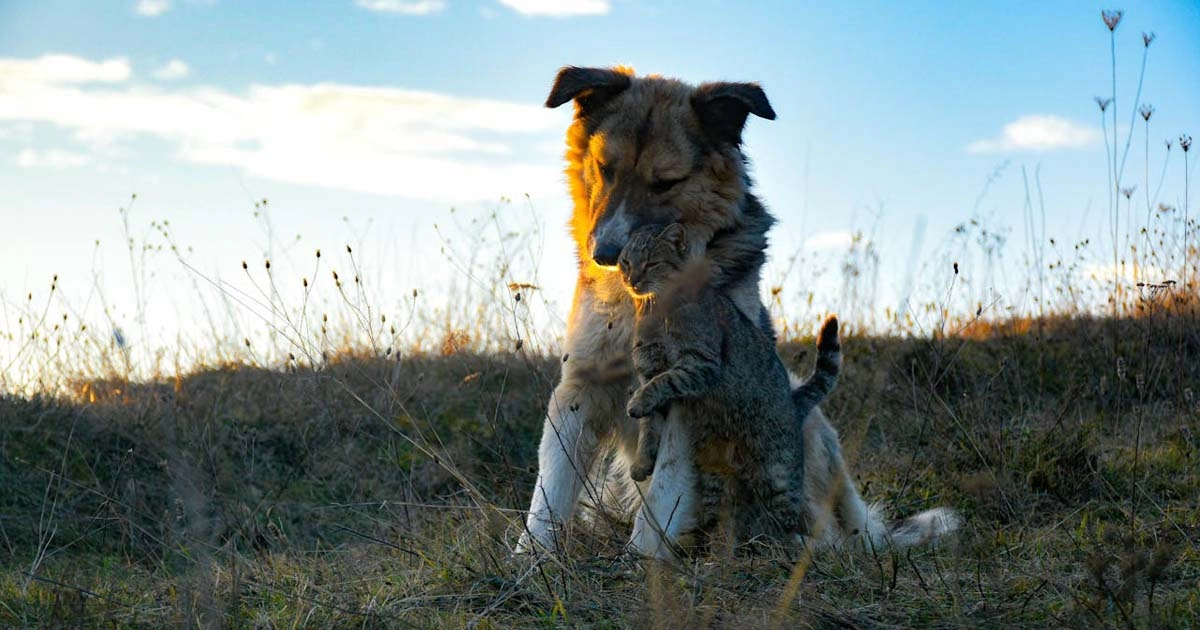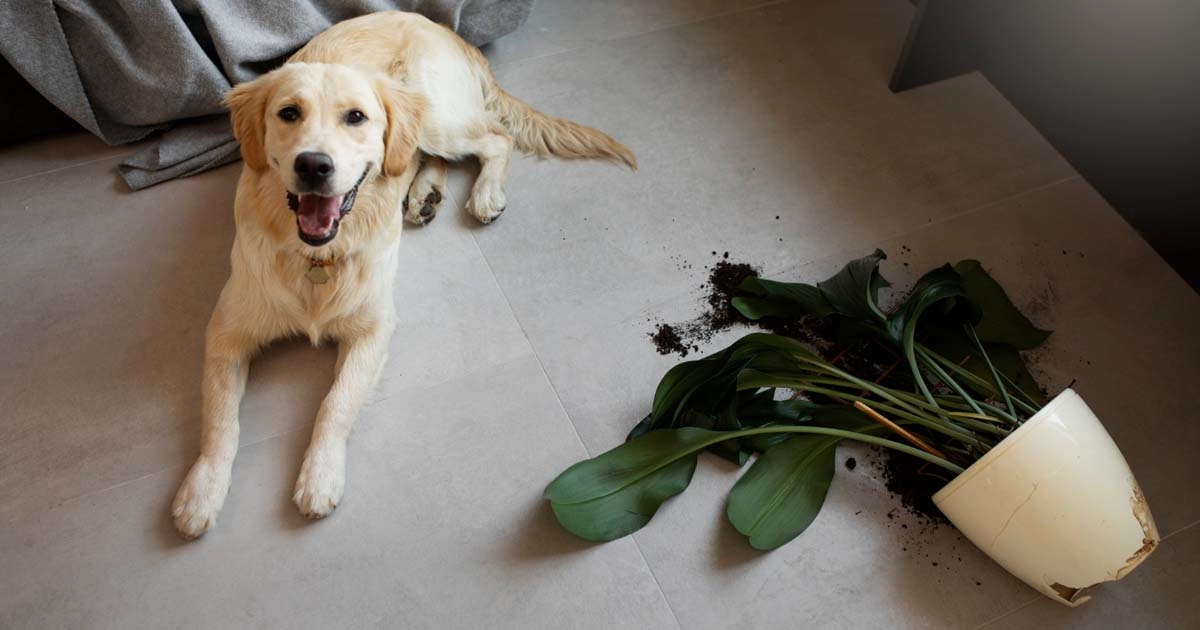Processionary caterpillars: How dangerous can they be for our pets?

General
05/03/2024

The caterpillars that usually emerge in the spring are dangerous if touched and can be deadly to dogs and other pets due to their highly irritant hairs. But what exactly is a processionary caterpillar? How can you spot them and what can you do if you stumble upon a nest? Read our guide to discover everything you need to know about the processionary caterpillar.
What are processionary caterpillars and moths?
Over the past few years, news has focused on the oak processionary moth (sometimes called OPM for short), which are close relatives of the pine processionary moths. Scientifically speaking, they’re two different sub-species of the same family of insect (officially known as Thaumetopoeidae). Both types of moths originally come from warmer climates including Southern Europe and Northern Africa and it’s thought that they were accidentally introduced to the UK as eggs hidden in plants brought over from continental Europe.
These insects earn their name from their characteristic nose-to-tail “follow the leader” style of moving in large groups or processions. They’ll often move around like this to find a new location to nest or burrow, or in search of food.
The processionary moth lifecycle
Like many other insects, processionary moths go through several stages in their lifecycle before reaching adulthood.
Eggs: are usually laid in masses on oak trees during late summer and into September and hatch in early summer or spring.
Larvae: more commonly known as caterpillars, the larvae cause the most damage to trees and present a health risk to humans and animals. In this stage of the lifecycle, they build nests in trees and process in their characteristic nose-to-tail fashion.
Pupae: the last stage before emerging as a fully grown adult moth. The caterpillars (larvae) will usually process down the tree from their nest to pupate at ground level. Sometimes they’ll burrow slightly below the ground.
Adults: once they’ve emerged as adults from their pupate stage, they actually only live for up to two or three days. They’ll quickly mate and lay their eggs, restarting the lifecycle.
In the UK, it’s more likely to spot the larvae stage (caterpillar) processionary moth during the months of May onwards and into the summer. By September, the pupation stage is usually complete and adult processionary moths will emerge from their nests.
Why is it dangerous for dogs to go near them?
Processionary caterpillars present dangers for curious pets, especially dogs who may go sniffing around underneath trees and may be fascinated if they spot a hairy creepy-crawly.
Processionary caterpillars are covered in thousands of hairs, known as Urticating hairs or bristles (around 62,000 of them!). These contain a highly irritating protein that can cause severe allergic reactions. In the latter larvae stage of development (the caterpillars themselves go through six stages of moulting before entering the pupate phase) these hairs can be ejected or shed. Even when not attached to a caterpillar, these hairs can still cause incredibly nasty stings.
What do dog owners need to know about the processionary caterpillar?
The first thing you need to know about the processionary caterpillar as a dog owner is that they can be very dangerous. If a human comes into contact with a caterpillar or their hairs, it can cause a nasty allergic reaction, including a rash, asthma attacks, and vomiting. Dogs are at risk, too, though their symptoms may include a swollen, discoloured tongue or muzzle.
It’s important to be aware of the confirmed locations where the caterpillars and their nests have been discovered and to stay away and stay vigilant if you’re out walking your dog in areas populated by oak trees.
How do I know if my dog has had contact with the caterpillar or their hairs?
First, you should check if you live near one of the known areas where nests have been discovered. It’s important to rule out other possible causes – your vet will ask you a few question about where your dog has been recently so they can give the most appropriate treatment. Sadly, there’s no prevention treatment available as with flea prevention medicines.
Serious allergic reactions are rare and if your dog has come into contact with a few hairs it’s likely that your dog will only experience slight irritation or discomfort. In these cases, it’s a good idea to call your vet for advice and keep an eye on your dog for a few days. However, if you know or suspect your dog has come into direct contact with a caterpillar for example by sniffing, attempting to eat or play with a caterpillar or their hairs, you may spot the following symptoms of a serious allergic reaction:
- Swollen tongue, sometimes will appear purple-blue
- Scratching their muzzle
- Excessive salivation or drooling
- Swelling in other areas such as the mouth, throat and stomach
- Difficulty breathing or gagging
- Vomiting
What should you do if your dog has come into contact with a processionary caterpillar?
Wash your dog’s mouth with water to reduce the effect of the caterpillar hairs – it’s important not to scrub as this will make it worse.
Take your dog to the vet for an emergency appointment. It’s important that a vet sees them quickly so your dog can be given the right treatment to alleviate the symptoms.
In the most serious and rare cases, a severe allergic reaction could be fatal, so it’s important to stay vigilant, avoid known processionary caterpillar areas and keep your dog away from oak trees where possible during the spring and summer months. After walks, make sure you check your dog’s mouth and muzzle for any signs of irritation.











